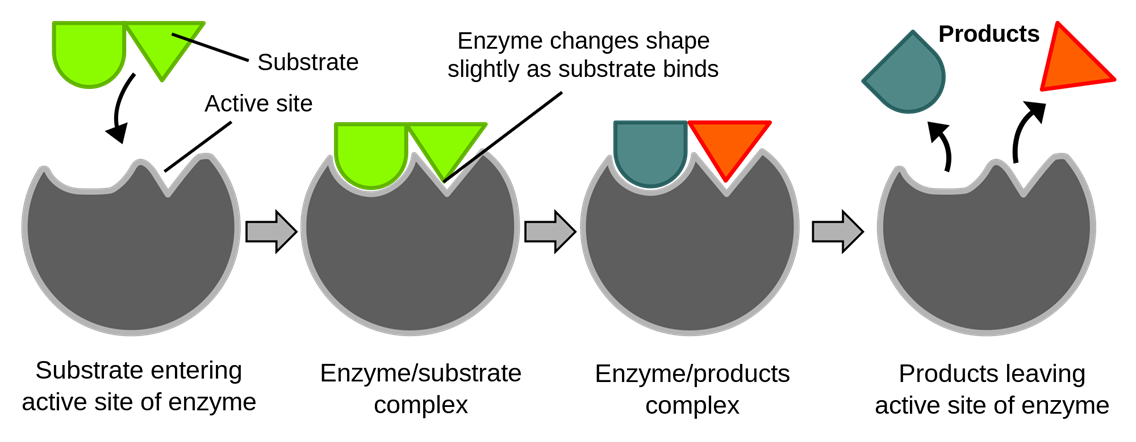What do we do when we fall ill? We take medicines or drugs to help ourselves get better, to heal our bodies. But have you ever wondered how this happens? What is the mechanism of these drugs and how do they control or eliminate disease? This functioning of drugs can be explained by drug target interaction. Let us learn more about it.
Suggested Videos
Drug Target Interaction
Drugs are chemically synthesized chemicals that control, prevent, cure and diagnose various diseases and illnesses. They do so by reacting with various macromolecules in the human body and elicit some form of positive biological response. In pharmaceutical terms, the macromolecule (or biomolecule) whose function and activity is modified by a specific drug, is known as the drug target.
This means the drug is designed to specifically target and react with that specific biomolecule. These biomolecules could be proteins, nucleic acids, receptors, enzymes, hormones, ion channels etc. Here we will be focussing on two of the main biomolecules when it comes to drug-target interaction, enzymes and receptors.
Browse more Topics under Chemistry In Everyday Life
- Chemicals in Food
- Cleansing Agents
- Drugs and Their Classification
- Therapeutic Action of Different Classes of Drugs
Enzymes as Drug Targets

First, let us understand what enzymes are and how they function. Enzymes are biomolecules in the human body and they are are a form of protein. Their essential function is to be biological catalysts for certain reactions occurring in the body. They regulate these chemical reactions, but themselves remain unaffected by them.
The molecules that interact with enzymes are called substrates. The reaction will produce new molecules, known as products. The enzymes hold the substrate firmly in their active site. This allows the reagent to react with the substrate successfully. The enzymes hols the substrate in the active site by a variety of interactions such as hydrogen bonding, ionic bonding, van der Waal force etc.
The other function of the enzyme is to provide functional groups that will react with the substrates to carry out the necessary chemical reactions that support all our life processes.
Drug-Enzyme Interaction
At certain times the actions of enzymes need to be controlled and we do this with the help of drugs known as enzyme inhibitors. Here the enzyme will be the drug target, i.e. the drug will try to impede with the functioning of the enzyme. This can be done in one of two ways,
- Some drugs will rival the substrate by attaching themselves to the active site of the enzyme. They are known as competitive inhibitors. This will not allow the substrate to attach itself to the enzyme, and so the reaction will not occur. But if the concentration of the substrate is far greater than that of the drug, such a method will not work successfully.
- Then the inhibitors known as allosteric inhibitors will attach itself to the allosteric site of the enzymes. This is any other site than the active site. By doing so they will change the shape and structure of the enzyme. Now the substrate cannot recognize the enzyme, and won’t attach itself to the active site, thus inhibiting the catalytic reaction.
Receptors as Drug Targets
Receptors are also a protein in our bodies. Their main function is to facilitate communication, between two neurons and between neurons and muscles. These biomolecules help us communicate via certain specific chemicals, known as chemical messengers.
Receptors are usually found in the membrane of cells. They are embedded in the cell membrane in a very peculiar way. Most of their body is contained within the membrane. Only a small portion of the molecule projects out of the membrane in the region outside the cell. This region that projects out, contains the active site of the receptor.
So when a chemical messenger approaches the receptor, it binds to the active site of the receptor, and the shape of the molecule will change. This will transmit the message to the cell, inside the membrane. So the message will be relayed to the cell, without the chemical messenger even entering the cell.
There are numerous types of receptors in the human body. These receptors interact with many chemical messengers. The receptors are able to identify their particular messenger, because of the difference in the shape, structure and the chemical composition of the active sites. This allows the receptors and the messengers to interact with selectivity.
The drugs that target these receptors do so by impeding its natural functioning. They attach to their active site and inhibit their actions, and block the communication of the message. These are known as antagonists, examples include naltrexone and naloxone. Another way a drug targets receptors is by mimicking the natural messengers. This activates the receptors and will produce some kind of biological response. Such drugs that elicit a response from receptors are known as agonists.
Solved Question for You
Question: Drugs can inhibit the catalytic activity of enzymes by binding at
- Active Site
- Allosteric Site
- Both of the above
- None of the above
Answer: The correct answer is option C. Drugs that target enzymes can attack both the active site and the allosteric site of an enzyme. By binding to either of the sites, it will not allow the substrate to attach and in turn decrease the catalytic ability of these enzymes.






Leave a Reply